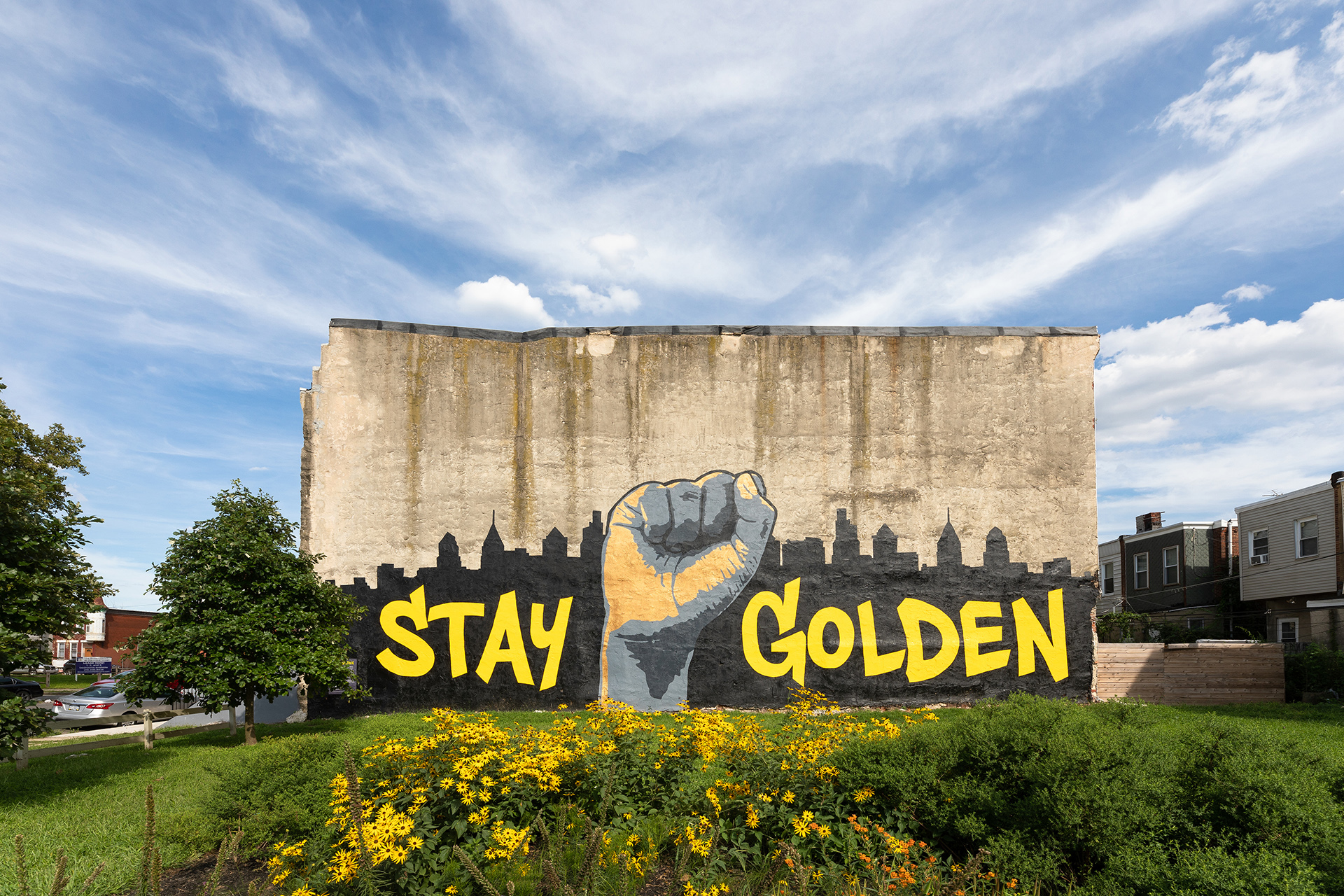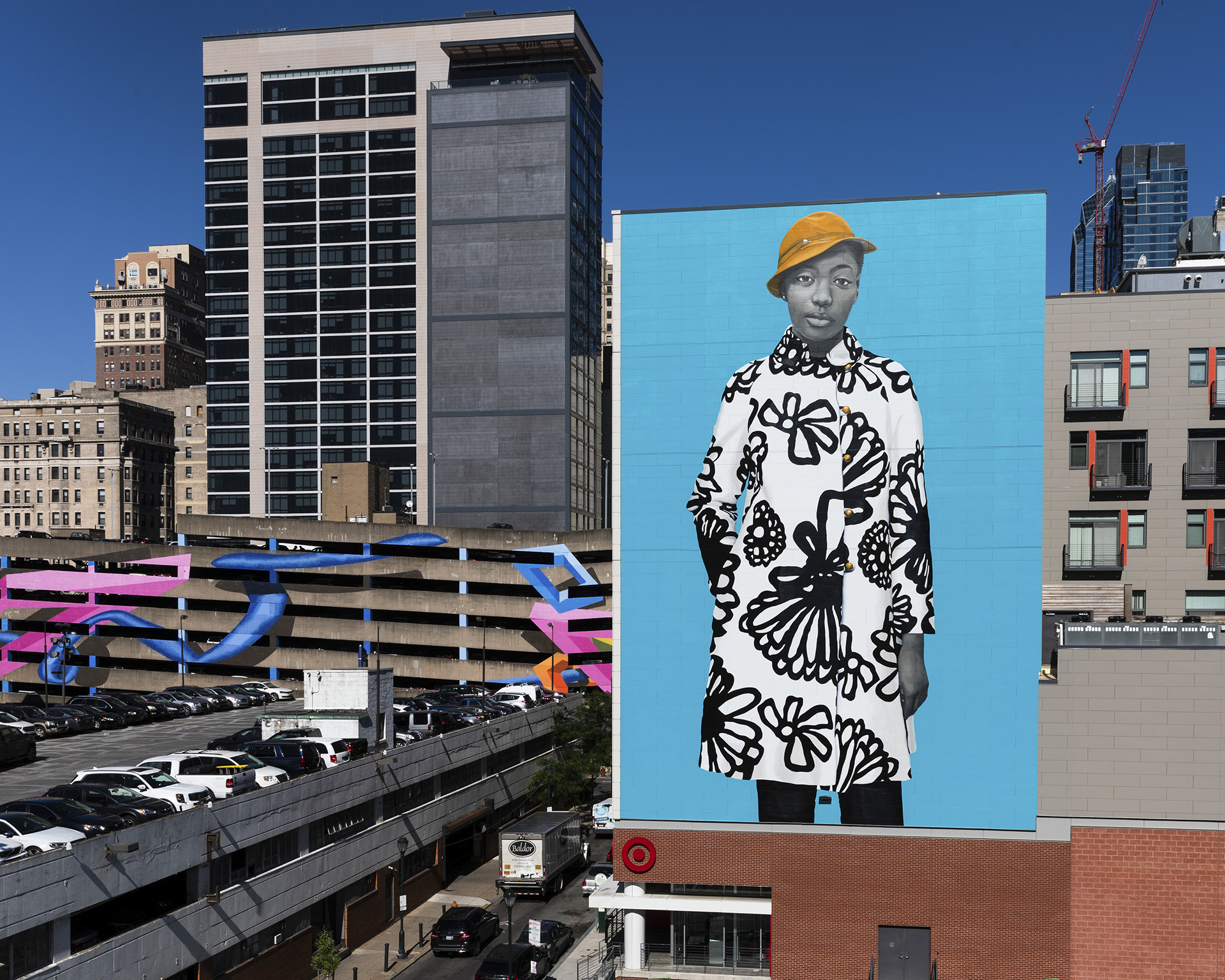This essay is by Jane Golden, as told to Caitlin Butler.
Over the last year, as the world reeled from multiple pandemics, public artmaking asserted its role facilitating civic dialogue and expression. As the executive director of Mural Arts Philadelphia, I have observed an exciting uptick in creative risk-taking. Artists are pursuing conceptually and aesthetically bold projects, offering new spaces for people to discuss systemic racism, abolition, reparations, migration, and climate justice. For many, their commitment to exploring and advancing dialogue on these topics is not new. Rather, the context is shifting, with new levels of support and attention flowing to the work, advancing its scale and impact.

The images that emerge from this moment will no doubt be powerful. They will offer us new visuals, new iconic statements, new representations. They will unearth histories and envision aspirational futures. In engaging with these works, some people will feel newly seen, understood, and heard; others will grow more aware, expanded, and inspired.
But if my experience in this field is predictive, images alone won’t be enough to drive the kind of structural change that can lead to greater power and representation in many domains of public life. Rather, care must be taken to democratize methods of production; to intentionally redistribute power to those who reside in proximity to current and future monuments and will be impacted by the decisions made for these works. Taking the time to do this not only results in more authentic and meaningful representations, but also creates opportunities for people to forge relationships, negotiate conflicts, establish trust, and imagine broader possibilities for the places that they live. In essence, co-producing monuments and public art creates opportunities to practice and build more collective approaches to governance.
I was a young muralist when I first realized the impact of asking someone what they wanted to see in their neighborhood. That’s how Mural Arts got its start in 1984. In Philadelphia, neighborhoods struggling with disinvestment and neglected infrastructure, people craved beauty and would ask for scenes that reminded them of their lineages, for example landscapes depicting the American South or from Africa. These images were not especially political, but the fact that they existed was. They gave people power to define the public art they wanted in their communities - something previously seen as the exclusive domain of artists, curators, and arts councils.

Power over public art helped people see the power they had in other arenas, and how that power could grow when they worked together. The effect was catalytic. Communities subsequently led efforts to care for the vacant lots in front of murals and demanded improved public safety, blight remediation, and youth development opportunities. The City responded, leading to positive and sustained change.
Today, conditions in Philadelphia are different. Many neighborhoods continue to struggle with disinvestment and people still need services. But we face a new challenge: displacement resulting from redevelopment that fails to benefit those with a long history of living in a place. Opportunities to envision a shared future, build power, and advocate for human rights and needs are as relevant as ever. Public monuments and public art are one method by which to do this, but only if we take the time to build genuinely collaborative and horizontal methods of co-creation.

What does this look like? In one example of Mural Arts’ practice, we created a storefront hub that is co-designed and co-programmed with refugee and immigrant communities living in South Philadelphia. Started in collaboration with artist Shira Walinsky in 2011, Southeast by Southeast began as a production space for a single mural project. Our participants quickly claimed the space, turning it into a hub for intergenerational gathering and cultural exchange. People led and accessed cooking demonstrations, dance classes, and social services, and a group of weavers formed a collective. Ten years after it first opened its doors, Southeast by Southeast is going strong, constantly adapting to the evolving needs of its community.

Organizing at the grassroots level is an important step, but change also requires that people endowed with the power and resources to move systems towards equity pay attention to the ideas emerging from these collective processes. I see incredible shifts right now: newfound creativity and momentum percolating among artists and within communities, alongside those with systemic power listening to and supporting their strategies. At this critical juncture, here is my call to action: keep the risk-taking going. Real change will take time and require sustained attention. New, bold monuments aren’t the end, they are the beginning.
This essay in the “Changing Monument Landscape” series was commissioned as part of the launch for the National Monument Audit, produced by Monument Lab in partnership with The Andrew W. Mellon Foundation. For more on the Audit, visit monumentab.com/audit.
